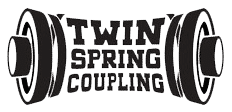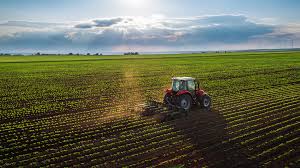Maximizing Value with OEM Power Transmission Couplings for Agriculture
Table of Contents
As someone who’s spent 15 years marketing power transmission couplings in the agriculture industry, I know firsthand how critical reliable parts are to keeping your farming equipment running smoothly. Power transmission couplings, though small, play an essential role in making sure your machinery functions optimally. But more importantly, I’ve seen how the right coupling can be the difference between minimizing downtime and racking up expensive repairs and replacements.
In this post, we’ll dive into the importance of choosing the right OEM power transmission couplings, how to save money while maintaining quality, and why brands like Weasler, Spicer, and Neapco offer the best options for your needs. Whether you’re dealing with tractors, harvesters, or other heavy equipment, these couplings are essential for transferring power from your machinery’s engine to the various systems that drive it.
What Are Power Transmission Couplings and Why Do They Matter?
A power transmission coupling is a mechanical component that connects two shafts together to transfer rotational power. They help deliver torque and power between different parts of your machine, making sure everything works together smoothly. Whether it’s a tractor working hard in the fields or a baler harvesting crops, couplings ensure that power gets where it’s needed efficiently.
For farmers, reliable couplings can make the difference between a smooth harvest and costly downtime. Given the harsh conditions and heavy demands of agricultural work, using high-quality couplings is essential. This is where OEM (Original Equipment Manufacturer) parts come into play.
Why OEM Power Transmission Couplings Are a Low-Cost Solution
OEM power transmission couplings are made by the same companies that built the original components for your machinery. For instance, brands like Weasler, Spicer, and Neapco supply these parts directly to equipment manufacturers, ensuring the highest level of compatibility and performance. Here’s why choosing OEM couplings is not only a reliable option but also a low-cost solution in the long run:
- Guaranteed Fit and Performance: OEM parts are designed specifically for your machinery. This means that you won’t run into issues of compatibility, which can occur with aftermarket parts. When everything fits perfectly, you avoid the risk of breakdowns caused by poorly fitted components.
- Longevity: OEM couplings are made from high-quality materials and undergo rigorous testing to ensure they meet the standards of the original machinery. This means that while the upfront cost may be higher than some aftermarket options, OEM couplings last longer, reducing the need for frequent replacements.
- Efficiency in Power Transfer: When your coupling is designed specifically for your machinery, it provides better power transfer efficiency. This means that your equipment can work harder, faster, and more efficiently, all while consuming less energy. Efficient equipment translates into lower fuel costs and reduced wear and tear on other machine components.
- Warranty Coverage: Most equipment manufacturers offer warranties that only cover OEM parts. If you opt for aftermarket couplings, you could void your warranty, leading to higher out-of-pocket costs for repairs. Sticking with OEM ensures that you’re covered in case of malfunctions.
Top OEM Brands for Agricultural Couplings
When it comes to agricultural machinery, there are a few key OEM brands that consistently provide reliable and high-quality power transmission couplings. Let’s take a look at some of the top brands that Twin Spring Coupling resells, and why they’re trusted by farmers around the world.
Weasler
Weasler is a leader in manufacturing agricultural PTO (power take-off) driveline components, including power transmission couplings. Known for their rugged design, Weasler couplings are engineered to withstand the tough demands of agricultural applications. Whether you’re working with a rotary cutter or a hay baler, Weasler products offer the strength and durability needed to handle the heaviest workloads.
Spicer (Dana)
Spicer is a brand under Dana Incorporated, a world leader in power transmission and driveline technologies. Spicer couplings are often found in tractors, harvesters, and other agricultural machinery. They provide robust and efficient power transfer solutions, ensuring that your equipment can handle even the most demanding field conditions. Dana Spicer’s U-joints, in particular, are known for their superior performance and longevity.
Neapco
Neapco is another well-established brand in the power transmission industry. Their couplings are used in a wide range of agricultural machinery, providing reliable performance at a competitive price point. Neapco focuses on innovation, producing couplings that not only meet but exceed OEM standards. If you’re looking for an OEM coupling that offers both quality and value, Neapco is a strong choice.
OEM vs. Aftermarket: What’s the Difference?
One of the most common questions farmers ask is whether to go with an OEM coupling or an aftermarket one. Let’s break down the differences:
- OEM (Original Equipment Manufacturer) Parts: As mentioned earlier, OEM couplings are made by the same manufacturer that produced the original part in your equipment. They’re guaranteed to fit and work as expected. Although they tend to be slightly more expensive upfront, the long-term savings from avoiding breakdowns and poor performance make them worth the investment.
- Aftermarket Parts: These are made by third-party manufacturers, and while they’re generally less expensive than OEM parts, there’s often a tradeoff in quality and compatibility. Some aftermarket parts can perform just as well as OEM, but others might not last as long or could cause issues with your machinery. If you’re considering aftermarket parts, make sure you’re choosing a reputable brand.
While aftermarket couplings can be a good option in some cases, OEM parts generally provide better reliability and longevity, making them the safer and more cost-effective choice for most farmers.
How to Save Money on Your Couplings Without Sacrificing Quality
Buying OEM parts doesn’t have to break the bank. Here are a few ways to save money while still ensuring you’re getting the best quality:
- Buy in Bulk: If you have multiple pieces of equipment or know that you’ll need replacements in the future, buying OEM couplings in bulk can save you money. Many suppliers offer discounts for larger orders, and this can also save you the hassle of searching for parts in the middle of the season.
- Shop with a Trusted Reseller: Twin Spring Coupling offers a wide range of OEM power transmission couplings from top brands like Weasler, Spicer, and Neapco. By shopping with a trusted reseller, you can ensure that you’re getting genuine OEM parts at a competitive price.
- Plan for Regular Maintenance: Instead of waiting until a coupling fails, schedule regular maintenance and check-ups for your equipment. Replacing a coupling before it fails can prevent costly repairs to other parts of your machinery.
- Look for Promotions: Keep an eye out for promotions and discounts from your reseller. Many times, you can get deals on OEM parts during off-seasons or through special sales.
Best Practices for Extending the Life of Your Couplings
Even with high-quality OEM couplings, it’s important to follow best practices to get the most life out of them. Here are a few tips to keep in mind:
- Regular Lubrication: Keeping your couplings lubricated is key to preventing wear and tear. For U-joints, in particular, regular greasing can extend their lifespan significantly.
- Monitor for Wear: Routinely check your couplings for signs of wear, such as cracks or looseness. Addressing issues early can prevent complete failure and costly downtime.
- Proper Installation: Whether you’re installing a new coupling yourself or having a mechanic do it, ensure it’s done properly. Incorrect installation can cause misalignment and premature failure.
- Don’t Overload Your Equipment: Overloading your machinery puts extra stress on the couplings and can cause them to wear out faster. Stick to the manufacturer’s recommended load limits to get the most out of your parts.
Case Study: How a Midwestern Farm Saved Big with OEM Couplings
Let’s look at a real-world example. A mid-sized farm in the Midwest was dealing with frequent breakdowns in their hay balers and tillage equipment. After consulting with their mechanic, they discovered that the issue was due to using low-cost aftermarket couplings that weren’t designed to handle the heavy workloads.
The farm switched to OEM couplings from Weasler and Spicer for their balers and tractors. Although the upfront cost was higher, the farm saw immediate benefits. The new couplings lasted longer, which meant less downtime for repairs, and the farm was able to complete their harvest without any major interruptions. In just one season, the farm saved thousands of dollars in repair costs, proving that investing in quality OEM parts was worth it.
The Future of Agricultural Machinery and Power Transmission
As farming technology continues to evolve, so too will the components that power your machinery. In the coming years, we can expect to see more advanced materials and designs that make couplings even more durable and efficient. For now, though, sticking with high-quality OEM couplings is your best bet for keeping your machinery in peak condition.

